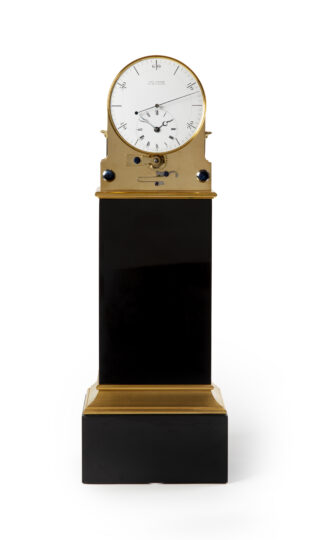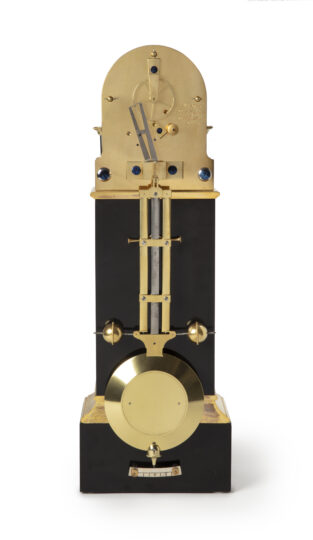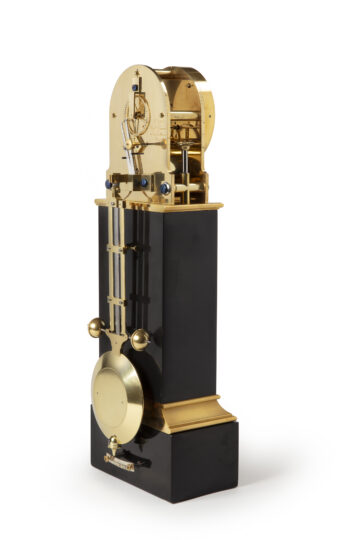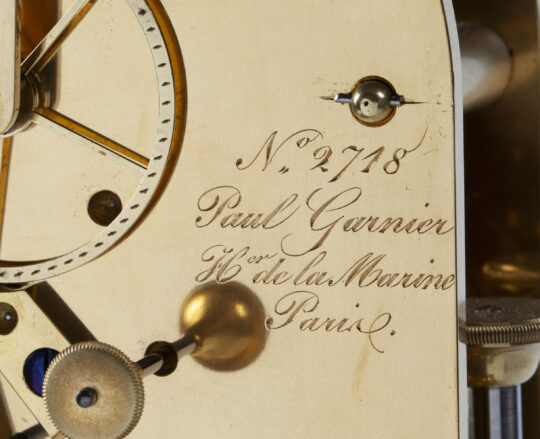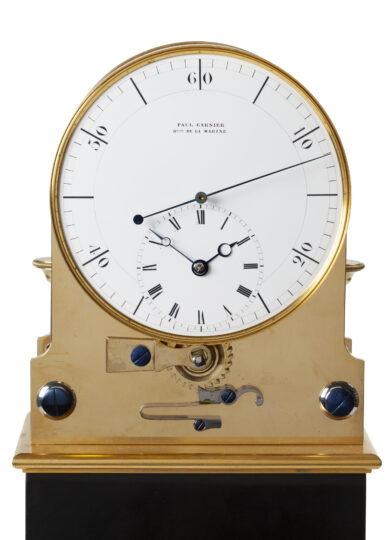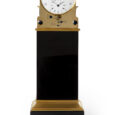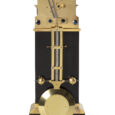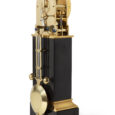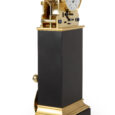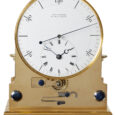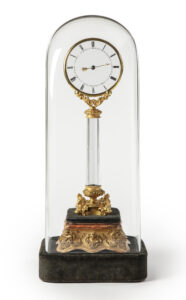TABLE REGULATOR Paul Garnier H.ger de la Marine No. 2718 Ca. 1845 France
M&R84
TABLE REGULATOR
Signed and numbered: Paul Garnier H.ger de la Marine No. 2718
Circa 1845
France
Movement
The spring-driven movement has a pin-wheel escapement with a patented compensation pendulum of the ‘Mahler’ type. This consists of a three-rod pendulum in which the horizontal compensation weights are raised or lowered with changes in temperature. The winding square is located under the dial. The timepiece is numbered 2718.
Dial
The white enamel dial has two chapter rings. The larger is a seconds ring, which has Arabic numerals for every 10 seconds and strokes for the remaining seconds, with those for every five seconds bolder. The chapter ring below the centre is for the time indication and has Roman hour numerals, five-minute divisions and strokes for the other minutes. The time is indicated by two blued steel Breguet hands, while the seconds are indicated by a straight, counter-balanced blued steel central seconds hand. The dial is signed above the centre as follows: Paul Garnier H.ger de la Marine.
Case
The brass movement is situated on a black marble column embellished with gilt brass mouldings. There is a scale to indicate the amplitude of the pendulum on the back of the base.
Duration 1 month
Height 50 cm.
Width 17 cm.
Depth 13.5 cm.
Literature
-D. Roberts, Precision Pendulum Clocks: France, Germany, America and Recent Advancements, Atglen, 2004, p. 103, fig. 31-21A-31-22.
-Tardy, Dictionnaire des Horlogers Français, Paris, 1971, p. 246
The maker
Paul Garnier (1801-1869) is famous in the history of horology. He was apprenticed to Antide Janvier and became the official clockmaker of the French Navy, as evidenced by the signature on the dial. He would develop many principles of chronometry and his achievements are highly appreciated by the world of collectors of high-precision instruments.
Note
Paul Garnier made a small number of this type of precision table regulator in the period 1840-1870: They differ only in details such as the austere dial or otherwise. This type of regulator, of which this clock is an example, is still used today as a timepiece of ultimate precision. The dial of this regulator type is characterized by a special layout of the hands, with a large central hand for indicating the seconds and a secondary dial for indicating the hours and minutes.
Mahler
In an article in the journal of the Antiquarian Horological Society, entitled ‘Paul Garnier Revisited’, Spring 1993, p. 418, Charles Allix explains the type of pendulum used on these precision regulators, which was patented by Franz Joseph Mahler in 1819. It is a three-bar design in which the horizontal compensation weights are raised or lowered in response to temperature changes.

